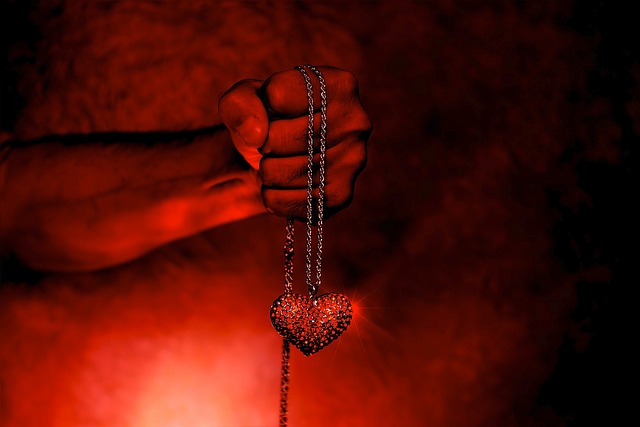You’ve probably seen tall, elegant, and somehow murky Gothic churches and cathedrals. Along with that, there are Goths, followers of the Gothic subculture. What do these two Gothics have in common? Why does the former deal with religion and the later with otherworldly forces? Finally, what is Gothic jewelry and why isn’t it the same as jewelry for Goths? So many questions to answer but we’ll try to.
Origins of Gothic
Gothic style in architecture originated in the Middle Ages (XII-XIV centuries) along with the tendency to erect majestic structures of a religious nature. A common feature of these cathedrals, monasteries, and churches was elongated, as if reaching out to the skies, shape, sharp towers, vaulted windows, openwork stone lace, stained glass windows, and an abundance of details in the ornamentation. These pompous structures were designed to show how small a man is in front of the greatness of God. The interiors of Gothic cathedrals are generously adorned with religious symbols (crosses, vines, thorns, etc.) while gargoyles and other bizarre creatures look at us from the exteriors.
Shapes inherent in Gothic architecture gradually migrated to fashion. Females from prosperous families wore tall cylindrical hats, elegant dresses made of thick fabrics with deliberately extended sleeves, as well as long-nosed shoes. Cold colors (blue, green, purple, etc.) dominated in Gothic fashion. The very first jewelry items in the Gothic style were massive and generously decorated with precious stones. Their designs imitated the majestic arches of churches.
The term Gothic itself appeared much later than the emergence of the Gothic style in architecture. The name refers to the tribes of Goths as if trying to emphasize obscurantism and savagery that reigned in the Middle Ages.
The second advent of Gothic happened in the Victorian era and mainly affected literature and fashion. Jewelry of this period is known for elegance, pretentiousness, and openwork. This is perhaps the most feminine and sophisticated jewelry trend. It was during this period that artisans experimented with colors. They abandoned vibrant colors in favor of monochrome finishing. Necklaces, cameos, tiaras, brooches, earrings, etc. of this period feature silver openwork as well as inserts of white and black pearls, precious stones, enamel, blackening, etc. We bet no woman could resist these magnificently intricate items. Modern fashion designers couldn’t stay away either. In their collections, they try to recreate majestic forms, lavish finishes, and even controversial religious symbolism.
Modern Gothic
Goths, as we see them now, were born in the 1970s. The very first Goths were rockers (Joy division, Banshee, etc.) famous for decadent moods, depressive outlooks, and a commitment to the wardrobe of predominantly black color. The ideological inspirers of these Goths were the poetry of William Wordsworth, Byron, and Samuel Taylor Coleridge along with iconic “Gothic” novels of Mary Shelley “Frankenstein” and “Dracula” by Bram Stoker. There is one thing that unites these works – a fusion of horror with romanticism.
Modern Goths, inspired by this gloomy atmosphere, gravitate toward mysterious symbols, the fascination of the other world, and find joy in suffering. To stand out in the crowd, Goths wear defiant black clothes, dye their hair black, whiten their faces, and, of course, add outlandish jewelry to boost their signature look. The main motifs of sterling silver Gothic jewelry are crosses, pentagrams, ankhs, Celtic patterns, skulls, and so on.
More than One Style
Gothic did not stop at one style. It continued developing and creating new, at times dissimilar, images. One could say that they are united by gloom but this is not entirely true. White Gothic is not at all gloomy because white is the light that resists darkness. Romantic and Victorian Goths, although they share the Gothic philosophy, exploit feminine and refined images characteristic of the Victorian era. Glitter Goths are glamorous chicks (this movement is almost entirely composed of women) who prefer shiny, bright, and striking stuff. There are many more branches of Gothic (Cyber, Steampunk, Vampires, tribal, fetish Goths, and many others). If this trend appeals to you, you can easily choose Gothic jewelry to match your inner self.
Finally, I would like to highlight those features of Gothic jewelry that helped it create a multi-million army of fans. These striking and unusual items are much-loved even by people who don’t associate themselves with the Goths:
– silver is the main metal since it is as pale as the moon, the patron of mysterious creatures hiding in the shadows;
– contrasting colors. White metals often carry inclusions of gems (either of cold colors or red like blood) or elements in a black finish (blackening, dark stones, enamel, lace, and fabric);
– unconventional and religious symbolism. If you notice a girl or a young man wearing a cross on a long chain as a fashion accessory, this is Gothic in its purest form. Gothic generally gravitates to crosses in all their manifestations (from the Catholic cross to the tau cross (ankh), Celtic, Greek cross, and many others). On a par with religious motifs, Gothic jewelry also sports more controversial symbols – pictograms, skulls, bats, Baphomet, vampires, etc.
Gothic as a fashion trend is full of contradictions yet it is attractive and romantic. Even if you don’t share its philosophy, Gothic jewelry will become a spot-on addition to an everyday wardrobe, evening gowns, and themed outfits.







